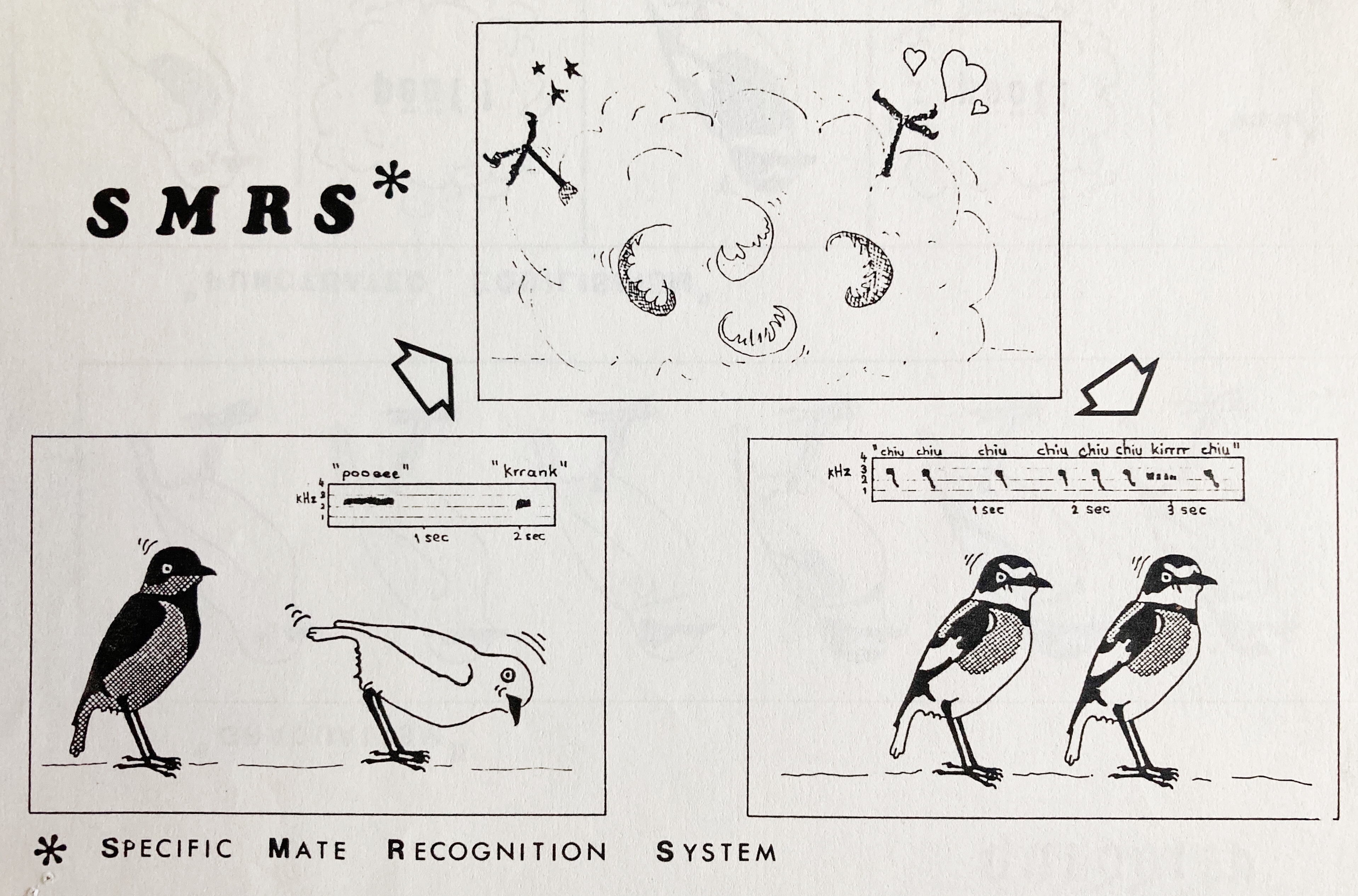


Lanioturdus torquatus, commonly known as the White-tailed Shrike, is a striking endemic species of the South West Escarpment Zone of central and northern Namibia and southern Angola. It remains an enigmatic species with respect its place in avian taxonomy – it’s neither a true shrike nor a batis-like flycatcher, behaving and calling in a mix of both forms. It also makes for fun ink drawings ! It has been likened to a “giant terrestrial batis”… I think this species deserves more credit!

In my youth I was benignly influenced by my peers and mentors studying zoology at the University of the Witwatersrand in Johannesburg, South Africa. One of these was Prof Hugh Paterson, who developed the Recognition Concept of species stressing the importance of the Specific-Mate Recognition System (SMRS) and offered a view of species which was radically different from the more traditional Isolation Concept. Paterson held that new species were formed through incidental changes in the SMRS.

Ah! The quiddity of both historical and contemporary evolutionary theory leaves most of us dazed and confused. And, I’ve even left out Lamarck’s stretchy neck theory and Goldschmidt’s Hopeful Monster theory, as well as diverse saltational options of mutationism (myfok! See https://en.wikipedia.org/wiki/Mutationism for a comprehensive list of ideas)

Darwinian Gradualism — In his 1859 book On the Origin of Species, Charles Darwin denied saltational evolution. He argued that evolutionary transformation always proceeds gradually, never in jumps. (I seem to recall bits of a joke that speaks of jumps by fearless legionaries, but these escape me).
Leave a comment